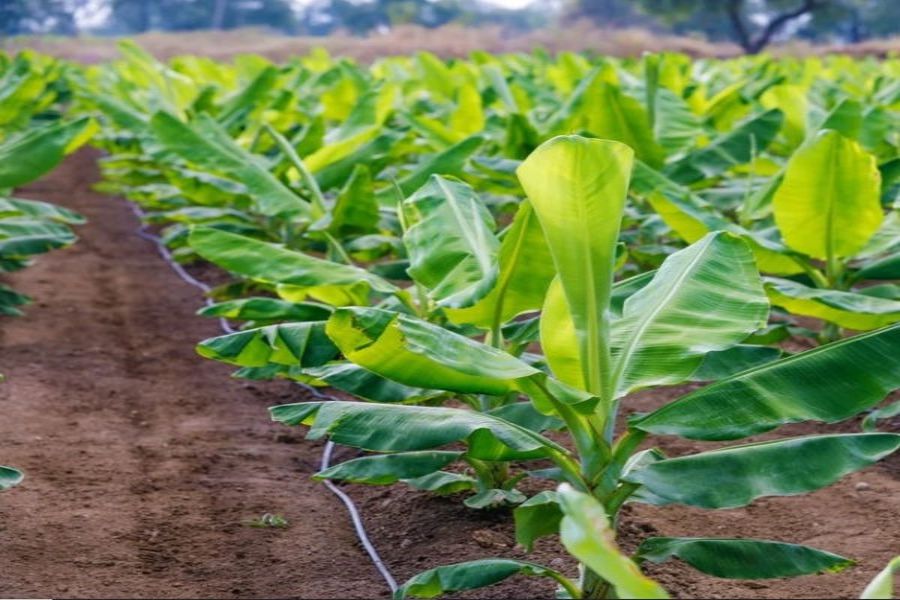When banana plants are exposed to cold temperatures, they can experience nutrient deficiencies due to the slowed metabolic processes and reduced uptake of nutrients. The main nutrients affected in banana plants during cold stress are: Potassium (K): Cold temperatures can affect the uptake of potassium, which is crucial for overall plant health, fruit development, and stress tolerance. The plant may show signs of potassium deficiency, such as yellowing of the lower leaves and leaf margin scorching, due to poor nutrient absorption in cold conditions. Magnesium (Mg): Magnesium is an essential component of chlorophyll and plays a key role in photosynthesis. Cold stress can limit the plant\\'s ability to absorb magnesium, leading to symptoms like interveinal chlorosis (yellowing between leaf veins) in older leaves. Phosphorus (P): Cold soil temperatures can inhibit the availability of phosphorus in the soil. Phosphorus is essential for root development and energy transfer in the plant, so deficiency may result in poor growth and weakened root systems in banana plants. Calcium (Ca): Calcium deficiency can occur in banana plants when cold temperatures affect root function and nutrient uptake. This can lead to poor cell wall development and leaf curling or distortion. Iron (Fe): Cold stress can also reduce the availability of iron, leading to chlorosis, particularly in younger leaves, as the plant struggles to take up this micronutrient under suboptimal conditions. Nitrogen (N): While not as directly affected by cold temperatures, nitrogen uptake may be reduced during cold weather, leading to slower growth and yellowing of the leaves. This is typically more of an indirect effect of the slowed metabolic processes.
